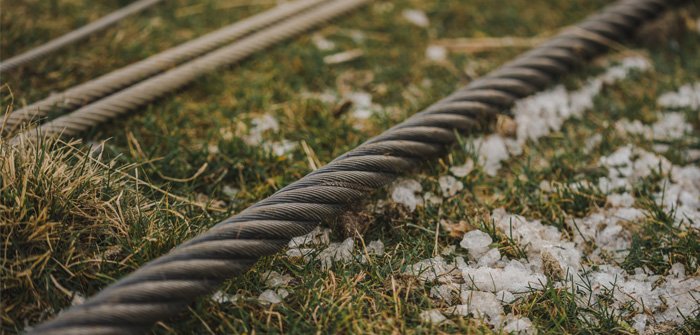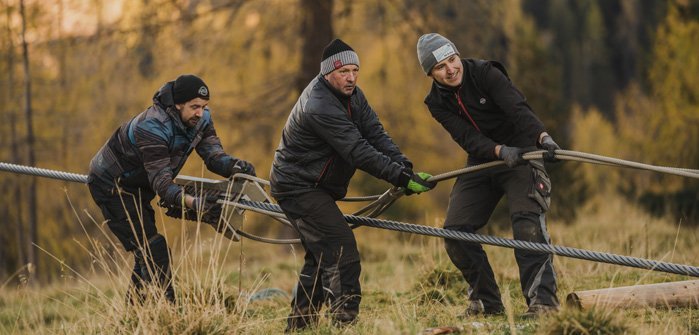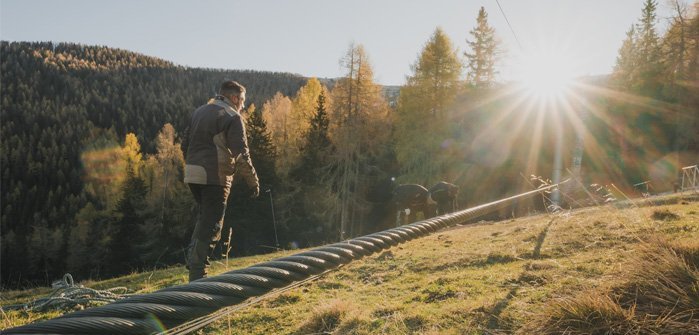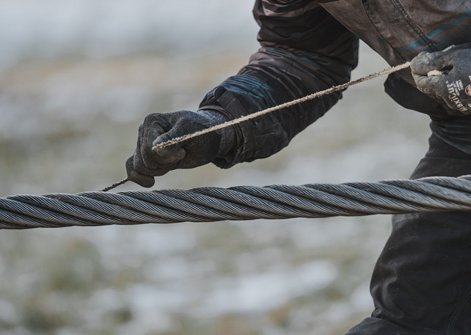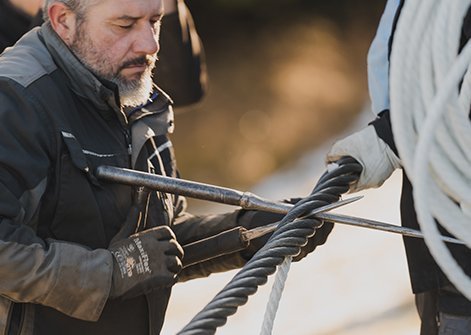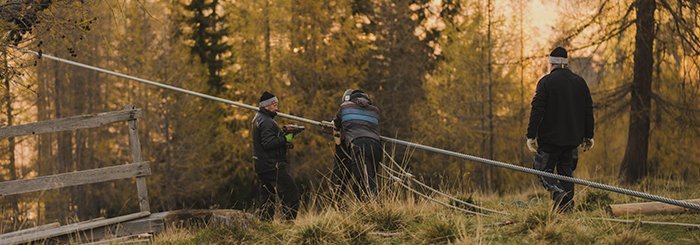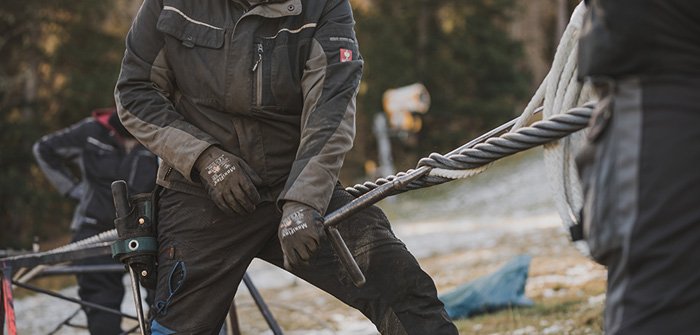All about the infinite cable car rope.
Our cable car takes you to the summit effortlessly and comfortably. Metre by metre, you float upwards on a thick steel cable. Surely you’ve already wondered how the cabins are even attached to the rope and then checked this by looking up. But did you know that the cable car rope has no specific starting or end point at all?
Let’s dive deep into the infinite rope and what technical feats are performed for your safety. In this blog article we take a tour behind the technical scenes of the Bad Kleinkirchheimer Kaiserburgbahn.
The cable car rope.
A steel cable weighing several tonnes is the namesake and centrepiece of all cable-drawn transport systems. It's made up of several strands, which in turn are made up of around 200 individual wires. These come together to spiral around the core of the rope – and goes on for kilometres. In the skiing area Bad Kleinkirchheim, for example, around 46 kilometres of rope are used – that’s roughly the distance from Klagenfurt to Villach.
Two become one.
Before the rope is placed on the carrier pulleys in the skiing area, the two ends of the rope must be intertwined. This is because transporting the heavy cable cars back and forth between the mountain and valley stations safely requires an enormous amount of effort. Compared to a mechanical rope connection, an invite cable makes the wire rope even more durable and the whole system a lot safer.
The process of connecting the ends is called 'splicing' or 'rope splicing' and is still the only method of producing an endless rope connection up to now. And it gets even better: splicing is still done by hand.
How does rope splicing work?
Needless to say, we closely observed and documented the latest splicing process on the Kaiserburgbahn II:
The location. An average of 60 metres of level ground – that's how much space is needed to carry out a rope splice. You can probably guess that the location of the cable cars doesn't always have this much space available. That's why a special scaffold is often built to enable splicing even on uneven terrain. Fortunately, in the case of the 4.5 km long cable for the Kaiserburgbahn II, we were able to make use of a wide section of slope directly below.
Unravel first. Firstly, the individual strands at the cable ends must be unravelled. The length of these loose ends is standardised and depends on the overall diameter of the rope. Basically, the thicker the rope, the longer the so-called splice (which is the area where the strands are joined together). For a rope that's 44 mm in diameter, as on the Kaiserburgbahn II, for example, the splice is around 50 metres long.
Then weave together. The strands of the two rope ends are then intertwined, tightly wrapped and woven together again. A hydraulic press is then used to compress and compact the rope.
The test phase. Before the rope is put into operation (again) and transports the first passengers, it must of course be tested extensively.
Our employees spent around two days splicing the cable on the Kaiserburgbahn II, under the guidance of a specialist team from Teufelberger. And the splice point? Invisible. And it's important that it is, because only then can the rope be guided cleanly over the rollers.
Did you know...? Splicing the individual strands is also referred to as 'marrying' them. A cute metaphor, right?
Replace or repair?
Cable cars are one of the safest means of transport – as confirmed by the TÜV association. One of the reasons for this is that the Austrian Cable Car Act obliges all cable car operators to carry out maintenance work on their ropes each year. Every five years, a special inspection must also be done by external experts.
And these checks make sense since a well-maintained rope often has a service life of up to 40 years. When and how often a restoration or new rope splicing is necessary depends, among other things, on the operating hours of the cable car itself.
During the inspections, our team closely scrutinises any changes in the condition of the rope. If the rope needs to be replaced, this is referred to as discarding. You can tell this by the broken wires and abrasion on the outside of the rope. To check the internal condition of the rope, it is scanned using a magneto-inductive testing method – just like an ordinary medical X-ray.
By the way: As wire ropes are made up of many individual wires, the force acting upon them is distributed evenly across all the wires. Even if some of the wires are already broken due to wear and tear, generally the rope is still safe to use.
Pretty exciting, isn't it? Now that you're armed with this insider knowledge, feel free to show off a little the next time you head up to the skiing area.
Fancy delving even further into the technical depths of the Bad Kleinkirchheimer Bergbahnen? In the 'Insights' section of the blog, you will find a number of exciting blog articles on this topic, including one all about the revision work of the cable cars in summer or about our snowmaking system. Worth a look!

